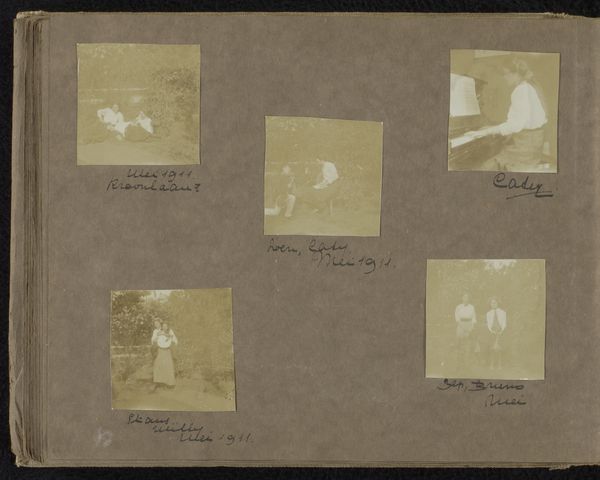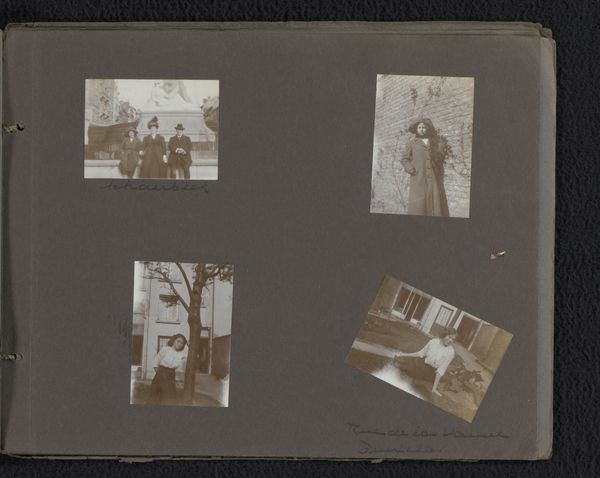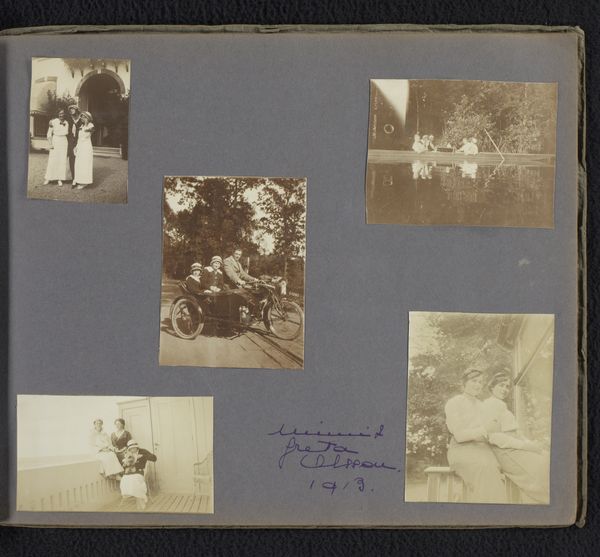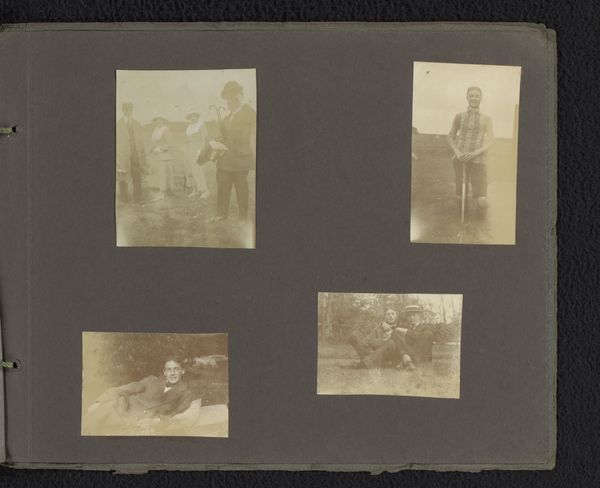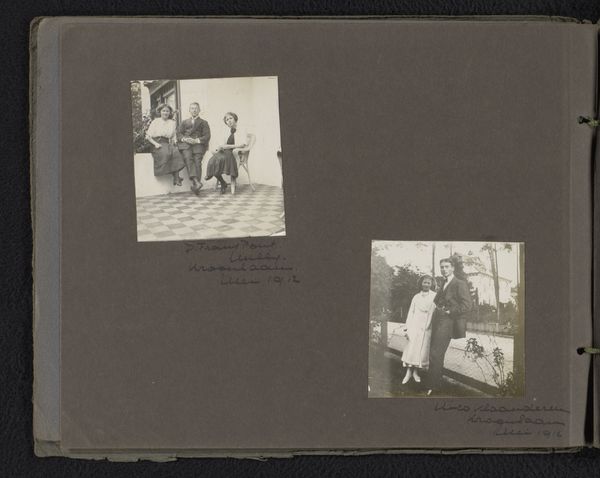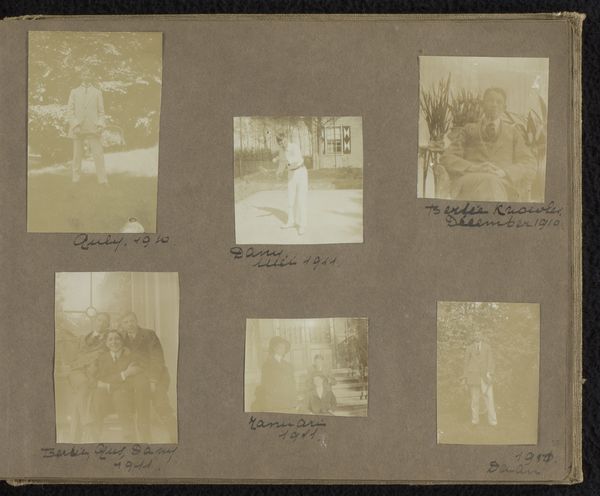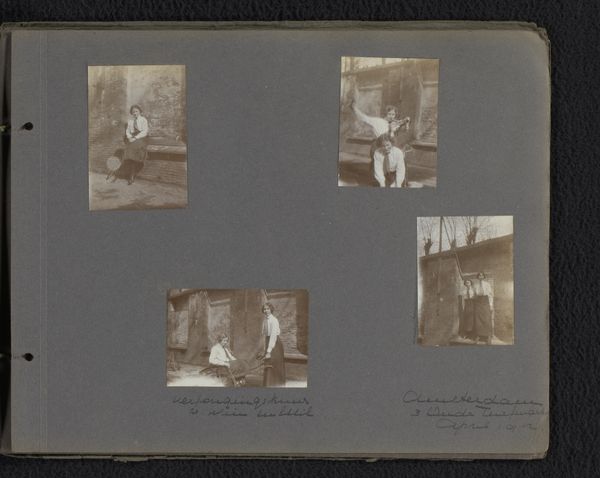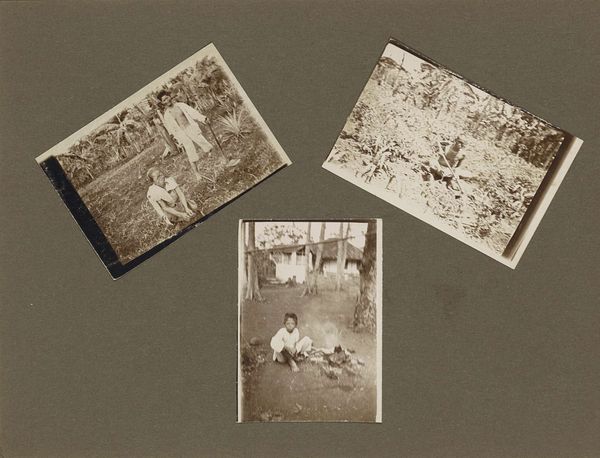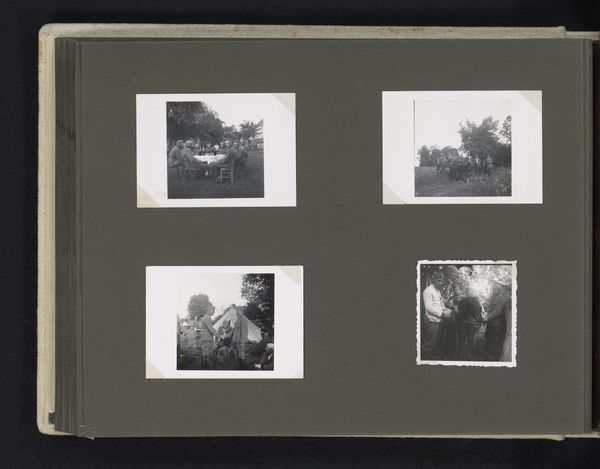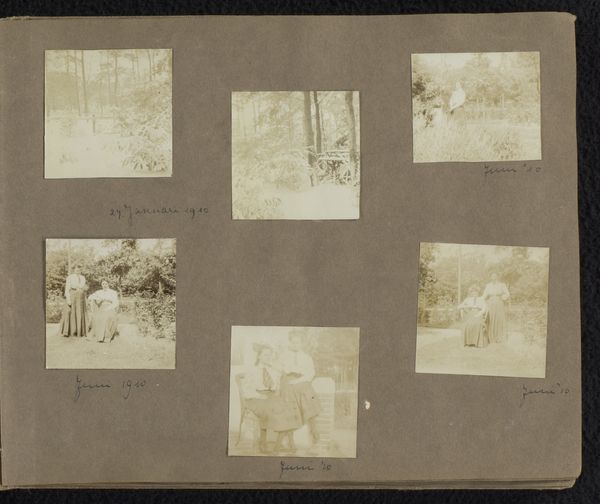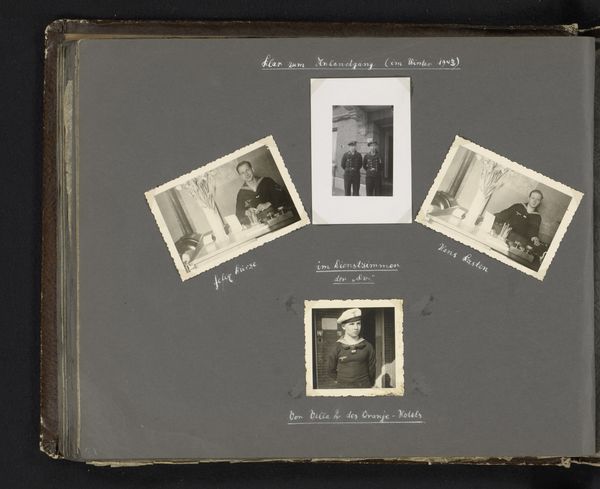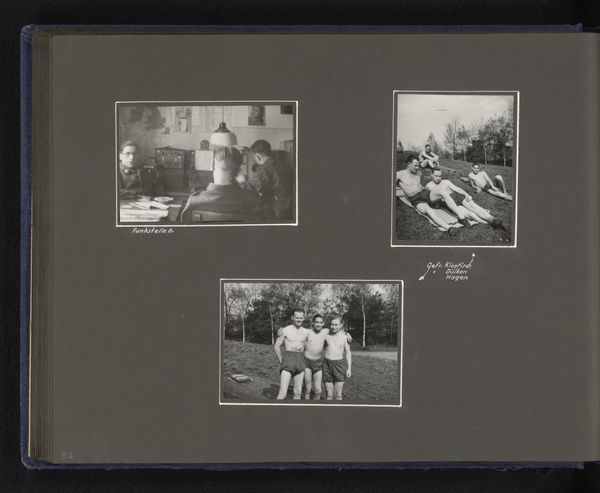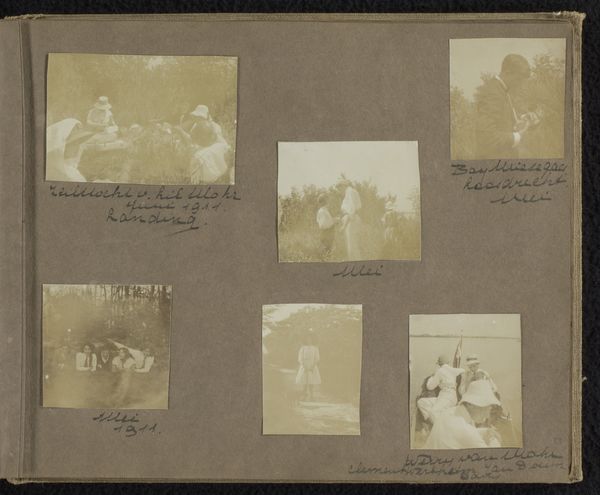
Isabel Wachenheimer met vriendinnetjes in de tuin, en Else Wachenheimer met onbekende vrouw in de tuin, september 1934-mei 1935, Duitsland Possibly 1934 - 1939
0:00
0:00
Dimensions: height 65 mm, width 60 mm, height 165 mm, width 235 mm
Copyright: Rijks Museum: Open Domain
Curator: What strikes me immediately about this photograph is its sense of intimacy. The snapshots, the handwritten notes…it feels like stumbling upon a cherished memory. Editor: Precisely. What we have here is a page from the Wachenheimer family album, created likely between 1934 and 1939 in Germany. The page features a series of albumen print photographs: "Isabel Wachenheimer met vriendinnetjes in de tuin, en Else Wachenheimer met onbekende vrouw in de tuin, september 1934-mei 1935, Duitsland." Curator: The mundane moments captured! Like butterflies pinned under glass—those girls frozen in perpetual sunshine… knowing what was looming casts such a heavy shadow, doesn't it? Editor: Absolutely. This seemingly innocent portrayal of daily life is profoundly affected by the historical context. The Wachenheimer family, presumably Jewish, were living in Nazi Germany during the period when the photo album page was produced. So, seemingly candid everyday imagery operates as a form of resistance against erasure. Curator: Resistance... I like that. The ordinary elevated to the heroic just by existing, by daring to be visible, to record happiness amid encroaching darkness. It is truly haunting. Do you think that these portraits sought to defy what was unfolding for jewish people? Editor: It's a possibility. Portraiture is typically connected to class and social capital. And if we draw from cultural and feminist theories, what does it mean to focus on representing the face as a primary locus of identity in that moment? Here the image of girlhood can also be analyzed through lenses of national identity during moments of intense social pressure. Curator: The way the swan photo breaks up the portraits. Nature as sanctuary perhaps? Editor: That feels like wishful thinking but the inclusion does reveal a need to capture the idyllic alongside the familial, a clinging to beauty amidst turmoil. It also points to larger theoretical frameworks that tie together ecology with critical race studies. What are the relationships between these elements? What does the image want us to see? Curator: It really prompts some difficult but necessary questions. It speaks to us across time, and whispers both loss, resilience, defiance and a whole other string of questions. Editor: Definitely. It’s a stark reminder that even the simplest image can be layered with meaning, laden with history.
Comments
No comments
Be the first to comment and join the conversation on the ultimate creative platform.
